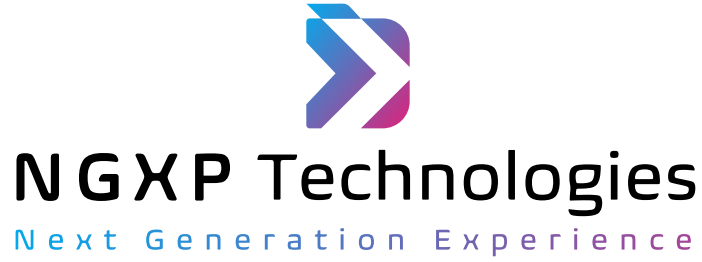In today’s dynamic digital landscape, the demand for reliable, high-performing applications has never been higher. Organizations must ensure their systems are not only functional but also resilient to failures. This is where monitoring and logging become essential. These two pillars of DevOps provide the visibility and insights necessary to detect, diagnose, and resolve issues before they impact end users.
At NGXP Technologies, we empower businesses by integrating advanced monitoring and logging solutions into their DevOps pipelines. Our approach helps clients maintain optimal performance, improve operational efficiency, and ensure their applications remain available around the clock.
Why Monitoring Matters in DevOps

Monitoring allows businesses to continuously observe the health and performance of applications, infrastructure, and networks. By collecting and analyzing data in real time, monitoring tools enable DevOps teams to:
- Identify Performance Bottlenecks: Detect CPU, memory, or network spikes that could affect system efficiency.
- Predict Failures: Recognize patterns that indicate potential failures, allowing preventive actions.
- Optimize Resources: Ensure infrastructure scales to meet demand, reducing waste and enhancing cost-efficiency.
Logging: A Critical Insight into System Behavior
Logging involves recording system events, transactions, and errors, offering granular insights into application behavior. Logs help DevOps teams:
- Pinpoint Issues: Trace errors to their source for faster resolution.
- Audit and Track Changes: Maintain a comprehensive record of system activity for security and compliance.
- Facilitate Incident Investigation: Logs provide valuable data for post-mortem analysis, aiding in continuous improvement.
The Role of Monitoring and Logging in High Availability
High availability ensures systems remain operational, even during unexpected failures. Monitoring and logging are instrumental in achieving this by:
Early Detection of Anomalies:
Continuous monitoring alerts teams to irregularities, enabling quick interventions.
Faster Incident Response:
Logs provide the necessary context to diagnose and resolve issues, minimizing downtime.
Capacity Planning:
Monitoring data helps forecast demand, ensuring systems scale efficiently during peak periods.
Disaster Recovery:
Comprehensive logs act as a blueprint for restoring systems after failures.
Technical Tools for Monitoring and Logging
At NGXP Technologies, we leverage industry-leading tools to build scalable, fault-tolerant monitoring and logging solutions.
Monitoring Tools
- Prometheus: A time-series database tailored for Kubernetes monitoring with powerful alerting capabilities.
- Grafana: A visualization platform that integrates with Prometheus to display real-time dashboards.
- Datadog: Comprehensive monitoring for cloud environments, supporting APM, infrastructure, and log management.
- Zabbix: Monitors network devices, servers, and cloud resources, providing deep insights into performance.
Logging Tools
ELK Stack (Elasticsearch, Logstash, Kibana):
- Elasticsearch: Indexes and searches log data.
- Logstash: Aggregates and processes log data from various sources.
- Kibana: Visualizes logs in real-time.
Fluentd: Aggregates logs from microservices and forwards them to various destinations.
Splunk: A robust log management platform that provides deep insights through AI-driven analysis.
Cloud-Native Solutions
AWS CloudWatch: Monitors AWS resources and custom metrics, integrating with Lambda for automated responses.
Azure Monitor: Tracks Azure resources, logs, and applications with real-time alerting and dashboards.
Google Operations Suite: Monitors Google Cloud environments and collects logs through Stackdriver.NGXP Technologies’ Approach to Monitoring and Logging
At NGXP Technologies, we tailor monitoring and logging solutions to align with our clients’ unique needs. Our services include:
Centralized Logging Platforms: Aggregating data from various sources for streamlined analysis.
Real-Time Monitoring Dashboards: Providing comprehensive visualizations to track system health.
Automated Alerting Systems: Notifying teams instantly when critical thresholds are breached.
Log Management and Analysis: Implementing log rotation policies and AI-powered insights for predictive maintenance.
We leverage industry-leading tools such as Prometheus, ELK Stack, Datadog, and AWS CloudWatch to deliver unparalleled visibility and control.
Best Practices for Effective Monitoring and Logging
Customize Alerts to Reduce Noise: Focus on critical metrics to avoid unnecessary distractions.
Implement Distributed Logging: Capture logs across microservices and distributed environments.
Enable Long-Term Data Retention: Store logs for future analysis and compliance requirements.
Integrate with CI/CD Pipelines: Ensure monitoring and logging are part of the deployment process.
Conclusion
At NGXP Technologies, we believe that proactive monitoring and comprehensive logging are the cornerstones of high availability. By embedding these practices into your DevOps workflows, you can ensure system resilience, improve performance, and deliver exceptional user experiences.
Ready to elevate your DevOps strategy? Partner with NGXP Technologies to implement cutting-edge monitoring and logging solutions that drive reliability and growth. Let’s build a future where downtime is a thing of the past.
